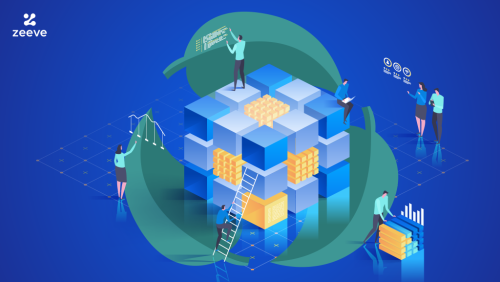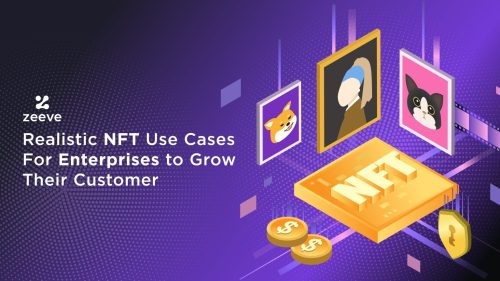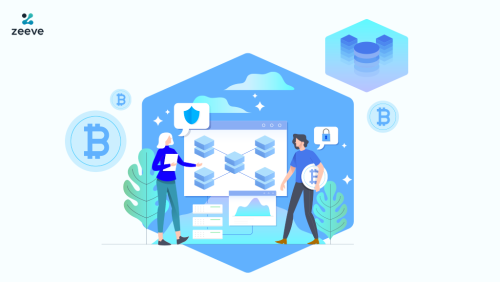Bringing sustainability to the forefront of the food conversation
From Michelin stars restaurants to household kitchens worldwide, there’s an unprecedented demand for a more innovative, safer food supply. Food from across the globe is available to customers today, regardless of the location, season, or environment. However, the plethora of options and expanded accessibility have increased complexity in the food supply chain.
According to the WWF (World Wildlife Fund), “By 2050, the world’s population will reach 9 billion, the global middle class will grow from 2 to almost 6 billion, and the consequent demand for food may at least double. So how can we produce enough and good quality food for all these people without destroying the planet and jeopardizing our future?” In other words, how do we make the food supply chain more sustainable?
One way is to have consumers demand it. A report from The Hartman Group found that about 70% of consumers say they want retailers to be more transparent about their sustainability efforts. At the shelf level, transparency increases a product’s chances of being selected over an otherwise identical product. Proving sustainability can be good for the bottom line, not just another above the line cost. The findings of The Hartman Group are well aligned with the UN Global Compact, which defines the objective of supply chain sustainability as to “create, protect, and grow long-term environmental, social and economic value for all stakeholders involved in bringing products and services to market.
Research shows that three major components drive sustainability in supply chains:
• Environmentally sound practices: recycling waste, packaging material, minimizing resource inputs, and using renewable energy
• Social responsibility – fair returns and sound labour conditions
• Economic viability – equitable distribution of value
Among the new technologies, blockchain holds the greatest potential to revolutionize the supply chain sector, moving it closer to the goal of “sustainable from seed to table”.
Blockchain allows every activity to be constantly tracked, verified, and controlled. The transparency obtained by tracing products from origin to the final consumer can reduce the carbon footprint and eliminate unsustainable practices.
• When consumers and supply chain partners know brands are transparent about the quality and origin of their foods, it builds brand equity and trust, creating differentiation. But, as the saying goes: Trust, but verify! All essential transaction records and certifications are stored immutably on the blockchain.
• Blockchain can improve order fulfilment, distribution, payment, information flow, and solve supply chain problems such as real-time communication, fast payment processing with reduced transaction fees, lower product costs, reduced delivery times
• Blockchain allows the sharing of confidential data such as purchaser and transaction records. Properly leveraged, this enables the delivery of the right product to the right place at the right time at the right price. Reducing inventory and increasing profits.
• A blockchain-based supply chain provides additional accountability metrics to ensure environmentally sustainable practices, increased protection of biodiversity, and human rights. Making information stable and immutable is one way to build the social sustainability of the supply chain.
• For example, the seafood industry is criticized for unsustainable practices, including overfishing, fraud, and human rights violations. Blockchain can help consumers trace their food sources, making sustainability indicators more quantifiable and meaningful.
Food Waste and Blockchains
One of the more unique challenges with the food supply chain is the impact of waste and spoilage. The carbon footprint of food waste globally is estimated to produce 3.3B Tons of CO2 into the atmosphere every year . Nearly 1.3 billion tons of fruit, vegetables, meat, dairy, seafood, and grains are wasted annually across the globe before even getting to our plates . As a result, food waste has become one of the world’s leading sources of greenhouse gas emissions: it is estimated that one-third of all food in the world is wasted, ending up in landfills to decompose and produce methane gas, more harmful than even carbon dioxide.
How can Blockchain play a role in solving this global issue? A digital food supply network powered by blockchain enables full transparency across the food chain to maximize shelf life, optimize partner networks and increase recall response efficiency, helping reduce waste.
Conclusion
At IntelliAqua, we have observed that awareness-building efforts are bearing fruit: consumer are more aware of Sustainability, resulting in a growing cadre of “sustainable-conscious” shoppers. Globally, consumers are demanding to know more about their food – where it came from, the effect of its production methods on our planet, and how workers and animals were treated in the process. Blockchain is the new paradigm enabling traceability and making sustainable more attainable.






Responses